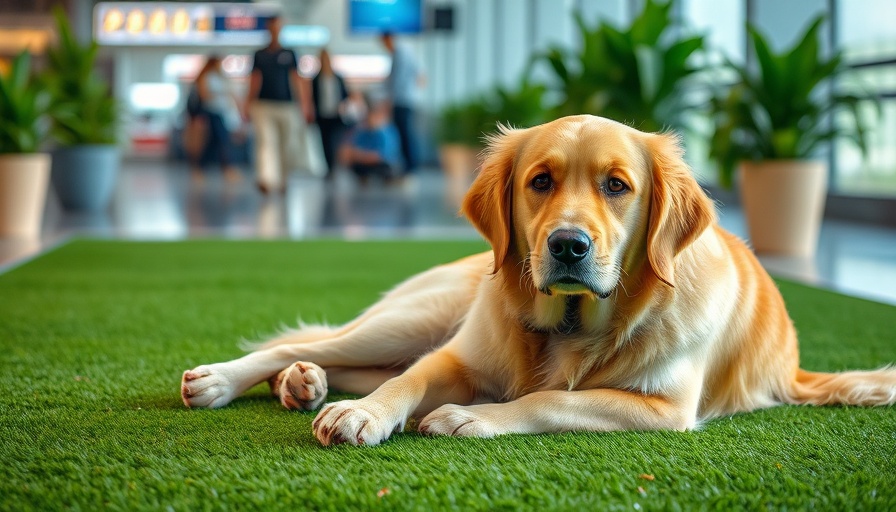
Traveling with Pets: A Challenging Experience
For many pet owners, the prospect of traveling with their furry companions often comes with a considerable amount of stress. Legal regulations have mandated that airports provide adequate facilities for service animals and pets, balancing the needs of travelers with those of their pets. This has led to an increase in Service Animal Relief Areas (SARAs), designed not just for practicality but also for the comfort and well-being of pets.
The Rise of Synthetic Turf in Airports
As part of a broader initiative to enhance the travel experience, many airports are adopting synthetic turf in their designated pet relief areas. This movement gained momentum after the federal government established new standards for these areas in 2016. Today's airports are embracing this technology not merely for functionality but for its potential to transform how pets manage travel-induced stress.
Why Synthetic Grass is Ideal for SARAs
Synthetic grass has become the material of choice for these relief areas for several compelling reasons. Firstly, it is incredibly durable and designed to withstand the high foot traffic typical in airports. Secondly, its quick drainage capability addresses sanitation concerns, ensuring the environment remains clean, which is vital in areas frequented by both animals and humans. This versatility makes synthetic turf an asset not only in SARAs but also in other applications where hygiene is a priority.
Navigating the Pet Relief Landscape: The Top Airports Leading the Way
Across the United States, certain airports stand out for the facilities they offer to pet owners. For example, the San Francisco International Airport boasts five post-security relief areas, complete with convenient amenities like drinking stations and waste disposal. In contrast, Los Angeles International Airport leads with a staggering eleven units dedicated to pet relief. Meanwhile, Dallas/Ft. Worth International Airport and John F. Kennedy International Airport provide unique solutions, including post-security and outdoor options that prioritize both the needs of pets and travelers.
The Future of Pet Travel: Opportunities Ahead
The integration of synthetic turf in airports indicates a broader trend towards pet-friendly travel. As airports continue to innovate with these spaces, travelers can expect further enhancements that cater to their furry companions. This might pave the way for more diverse amenities and services that reflect the growing number of pets traveling with their owners. The potential for developing fully equipped pet lounges or extended services remains an exciting opportunity in this evolving landscape.
Catering to All Pets: Beyond Service Dogs
While the primary focus has been on service animals, airports are increasingly recognizing the need to accommodate all pets. The quick-draining capabilities of synthetic turf make it suitable for general pet relief, fostering a culture of inclusivity at travel hubs. This progressive attitude benefits not only service animals but also the myriad of pets accompanying their owners, improving their overall travel experience.
Final Thoughts: The Importance of Comfortable Travel Environments
As the traveling landscape continues to adapt to the needs of pet owners, it’s clear that airports play a crucial role. Providing comfortable, clean, and accessible relief areas fundamentally changes the equations for pet owners embarking on their journeys. It is imperative to recognize the growing influence of technology in improving not only human experiences but also those of our beloved animals.
As developments such as these continue to unfold, consider how they might influence your own travel plans for the future. Will your travels with your pet become more enjoyable thanks to these innovations? Share your thoughts on how airport experiences can keep evolving to better serve pet travelers.
 Add Row
Add Row  Add
Add 




 Add Row
Add Row  Add
Add 

Write A Comment